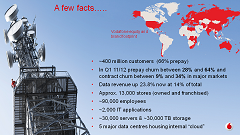
Driving sustainability in telco metro networks
How can operators apply best practice principles from the cloud and leading operators as they plan their metro network for growth?


How can operators apply best practice principles from the cloud and leading operators as they plan their metro network for growth?

This report explores how the cloud gaming market is likely to evolve and what this means for telcos. Beyond providing better connectivity through 5G and edge computing, there are several ways in which telcos can add value to the cloud gaming ecosystem.

Telco cloud made big promises for the transformation of telecoms. It is a fundamental enabler for 5G and the exciting opportunities ahead. Why hasn’t it delivered yet – and what needs to change?

Telcos and the major Internet platforms increasingly rely on each other. What kinds of agreements should operators enter into with Amazon, Apple, Facebook and Google and what should they avoid? And what are the strategic implications of supporting players who habitually use their powerful brands and software expertise to disrupt entire industries?

Customer Experience: An IT View of Telco 2.0 Vodafone Group CIO Albert Hitchcock describes the world’s biggest carrier by revenue’s massive IT transformation program. Presentation from EMEA Brainstorm, November 2011. Building Vodafone’s internal cloud